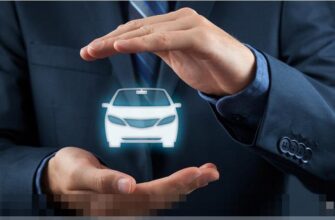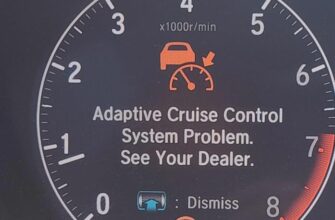Ah, the Land Rover Discovery 3 (or LR3, as it’s known in some markets). A fantastic, capable vehicle… right up until you see that unwelcome ‘Park Brake Fault’ message light up on your dashboard. Sound familiar? It’s a message no Discovery 3 owner wants to see, often appearing seemingly out of nowhere.
If you own or have owned one, chances are you’ve encountered this at some point. It’s a frustrating issue that can leave you unable to engage or release your handbrake, or worse, stuck with the brakes partially applied. But why does this happen, and what can you do about it? Let’s explore the mysteries behind this common Discovery 3 fault.

What Does “Park Brake Fault” Actually Mean on a Discovery 3?
Unlike older vehicles with a simple lever and cable handbrake, the Discovery 3 uses a sophisticated Electronic Park Brake (EPB) system. This system replaces the traditional handbrake lever with a button and uses an electric motor to physically apply and release the rear brakes. When you see the ‘Park Brake Fault’ message, it means this complex electronic and mechanical system isn’t working correctly.
It’s the EPB System Crying for Help
The EPB system on the Discovery 3 consists of a control module (the brain), a motor unit attached to the rear differential (the muscle), and cables that pull the brake shoes inside the rear discs. This system applies and releases the park brake automatically (like when you turn the engine off) or manually via the button on the center console.
A Known Weak Point
Unfortunately, the EPB system, particularly the motor unit, is a known vulnerability on the Discovery 3. Exposure to water, dirt, and general wear and tear in its location underneath the vehicle can lead to failures. It’s a specific headache for many owners.
“My ‘Park Brake Fault’ popped up on my LR3 one rainy weekend. After checking the forums, everyone pointed to the EPB motor corrosion. Got it replaced, and no issues since!” – James R., LR3 Owner
Experiencing strange error messages is part of owning a modern vehicle. For insights into other complex vehicle warnings, you might find our guide on Explaining the Nissan Rogue Chassis Control System Error interesting, as it covers another common system fault.
Common Symptoms You Might See
The ‘Park Brake Fault’ message isn’t just a pretty light; it comes with tangible problems. What might you experience when this fault appears?
- The obvious ‘Park Brake Fault’ message displayed on the instrument cluster screen.
- The red park brake warning light on the dashboard staying illuminated solid or flashing.
- An inability to apply the park brake using the button on the console.
- An inability to release the park brake you previously applied, leaving you stuck!
- Grinding, whirring, or clicking noises from the rear of the vehicle when you try to operate the brake.
- The vehicle feeling sluggish or like it’s being held back when you try to drive (if the brake is partially applied).
- In some cases, a faulty module or motor can even contribute to unexplained battery drain.
Why This Fault Happens: Common Causes
So, what specifically causes this fault message to appear on your Discovery 3? Several components within the EPB system are known failure points.
Motor Unit Failure
This is arguably the most common reason Discovery 3 owners see the dreaded fault message. The electric motor, often located near the rear differential, is responsible for physically pulling the cables that engage the brakes.
Water Ingress is a Big Problem
Given the Discovery’s capability and the motor unit’s vulnerable location underneath the vehicle, it’s highly susceptible to water, mud, sand, and salt spray, especially if you enjoy off-roading or live in a harsh climate. Over time, this environmental exposure leads to corrosion within the motor unit or its electrical connector, killing the motor or disrupting its function.
Mechanical Wear and Tear
Inside the motor unit, there are gears and mechanical parts that pull the cables. These components can wear out or strip over many years of use, especially if the system is constantly under strain due to sticky cables or improperly adjusted brake shoes.
Wiring Harness Issues
Corrosion or damage to the wiring harness that connects the EPB motor and the control module is another frequent cause. These wires run exposed underneath the vehicle, making them targets for environmental damage. A break in communication or power due to corroded wires or connectors will immediately trigger a fault.
“Had the fault message, sometimes it worked, sometimes it didn’t. Mechanic eventually traced it to a corroded connector on the wiring harness near the rear axle. Simple fix once found, but took some diagnosis.” – Eleanor V., Discovery 3 Enthusiast
Dealing with electrical gremlins can be tricky in any car. Understanding how different vehicle systems can throw errors might give you more context. Check out our guide on Understanding and Resolving Error Keyless System in Your Volkswagen.
EPB Module Fault
While less common than the motor unit itself, the electronic control module that manages the EPB system can fail. This is the “brain” of the operation, and if it malfunctions, it won’t be able to control the motor correctly, resulting in a fault message.
Brake Shoe or Adjustment Problems
Issues with the physical park brake shoes located inside the rear brake discs can also cause problems for the EPB system. If the shoes are excessively worn, seized onto the drum surface, or improperly adjusted, the EPB motor has to work much harder to apply the brake. This excessive strain can either cause the motor to burn out or trigger a fault code because the system detects it’s unable to achieve the required tension.
Low Battery Voltage is a Hidden Culprit
It might sound strange, but the EPB system on the Discovery 3 is known to be sensitive to low battery voltage. A weak or failing battery can sometimes cause the EPB module to receive insufficient power, leading to unpredictable behavior and fault messages. Always ensure your vehicle’s battery is in good health. This is a surprisingly common reason for various electronic glitches in modern cars.
ABS/DSC System Interaction
Because vehicle systems are increasingly interconnected, faults in other related braking or stability control systems, such as the Anti-lock Braking System (ABS) or Dynamic Stability Control (DSC), can sometimes trigger a related EPB fault message. It’s the car’s way of telling you something is generally wrong in the braking/stability network.
If your car is throwing system errors that prevent it from functioning correctly, you might also find information on how to handle situations like What to Do When Your VW Won’t Start Due to Error Stabilisation Control helpful for context on interconnected faults.
Temporary Fixes or What to Try First
Facing the ‘Park Brake Fault’ message, especially if the brakes are stuck, can feel like a crisis. Here are a few initial steps and checks you can attempt:
Checking the Battery
Again, because of the EPB’s sensitivity, ensure your vehicle’s battery is fully charged and in good condition. Sometimes, simply resolving a low voltage issue can clear intermittent EPB faults.
Attempting a Hard Reset
A common first step for many electronic car glitches is a “hard reset” by disconnecting the battery. Disconnect the negative terminal (and positive, if you’re comfortable and know how to do so safely) for 15-30 minutes. Use caution and refer to your owner’s manual regarding battery disconnection procedures. This can sometimes reset the EPB module.
Understanding the Emergency Release Procedure
The Discovery 3 is equipped with a mechanical emergency release cable for the park brake. This is typically located inside the cabin, often under the center console or near the gear selector. Consult your owner’s manual IMMEDIATELY to find its exact location and learn the correct procedure. This cable allows you to manually release seized brakes in an emergency, but remember it’s a temporary measure and doesn’t fix the underlying fault. Only use this if absolutely necessary to move the vehicle.
“Mine seized up completely in a parking lot! Had to use the emergency release hidden under the console. Definitely a moment of panic, but glad I knew about that manual override.” – Chris L., Trail Explorer
Listening for Sounds
When you try to activate the park brake button, listen carefully. Do you hear the EPB motor unit making any noise – a whirring, grinding, or clicking sound? Or is it completely silent? This can be a simple diagnostic clue indicating if the motor is trying to run (perhaps cables are seized or shoes are stuck) or if the motor/module isn’t receiving power or is completely dead.
When to Call a Mechanic (Ignoring This Can Be Costly!)
While the steps above might offer temporary relief or help you understand the issue, fixing the “Park Brake Fault” on a Discovery 3 typically requires professional expertise.
- If the fault message is persistent after checking the battery and attempting a hard reset.
- If the park brake is seized and will not release (even using the button), or if you’ve had to use the emergency release.
- If you hear grinding, clicking, or no sound from the EPB motor when trying to operate it.
- If you do not have access to a diagnostic tool capable of reading Land Rover specific fault codes for the EPB system.
Ignoring a park brake fault isn’t just inconvenient; it can compromise safety. Driving with partially seized brakes will cause rapid wear and can even be dangerous. Conversely, relying on a faulty park brake to hold your vehicle, especially on an incline, is a serious risk.
Sometimes, system faults can put your car into a limited performance mode, similar to limp mode. Learn more about that in our guide: How to Get Your Car Out of Limp Mode: Expert Guide.
Conclusion
The ‘Park Brake Fault’ message on your Land Rover Discovery 3 is a common, albeit frustrating, issue often stemming from the EPB motor’s vulnerability to the elements or problems within the system’s wiring or mechanics. While checking your battery or attempting a hard reset are valid first steps, a persistent fault almost always requires professional diagnosis with specialized tools. Don’t let this message leave you stranded or compromise your safety – addressing it promptly is key to keeping your capable Discovery 3 operating as it should.








